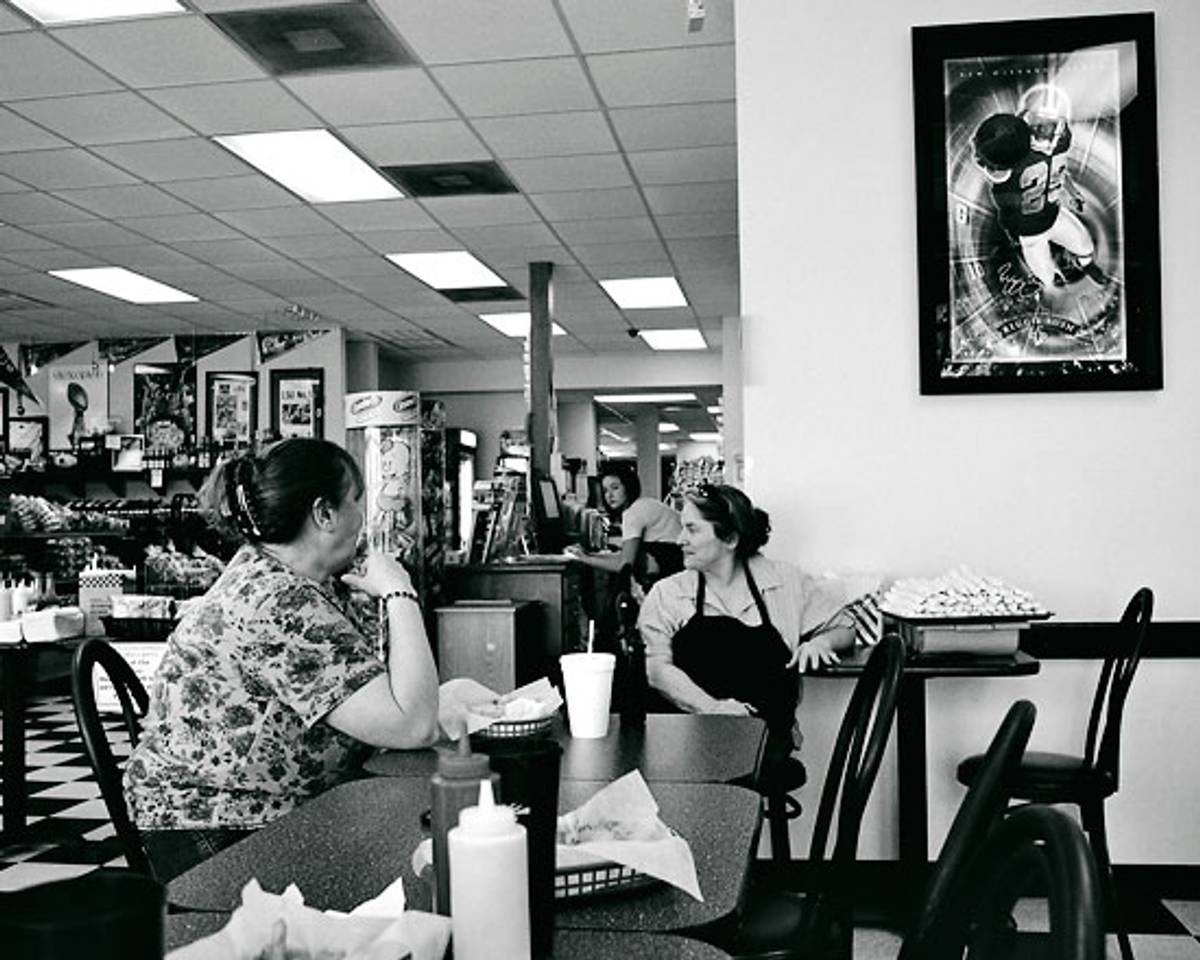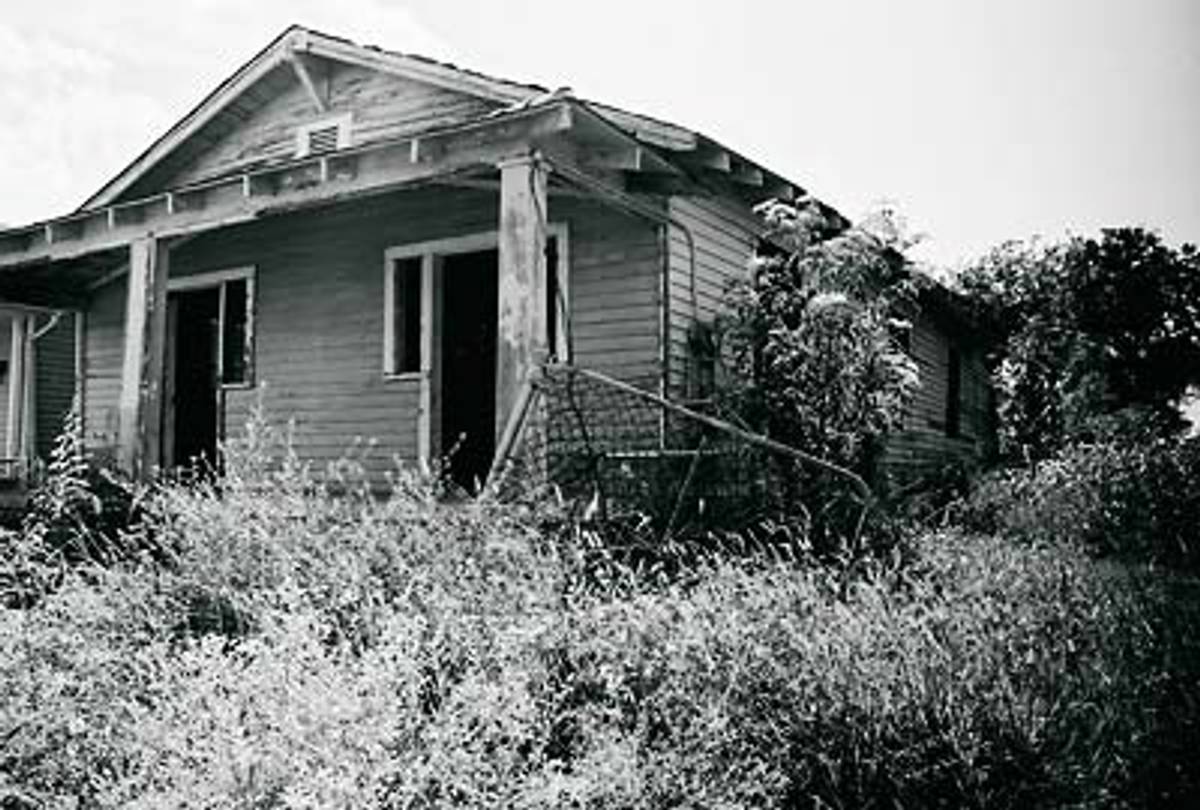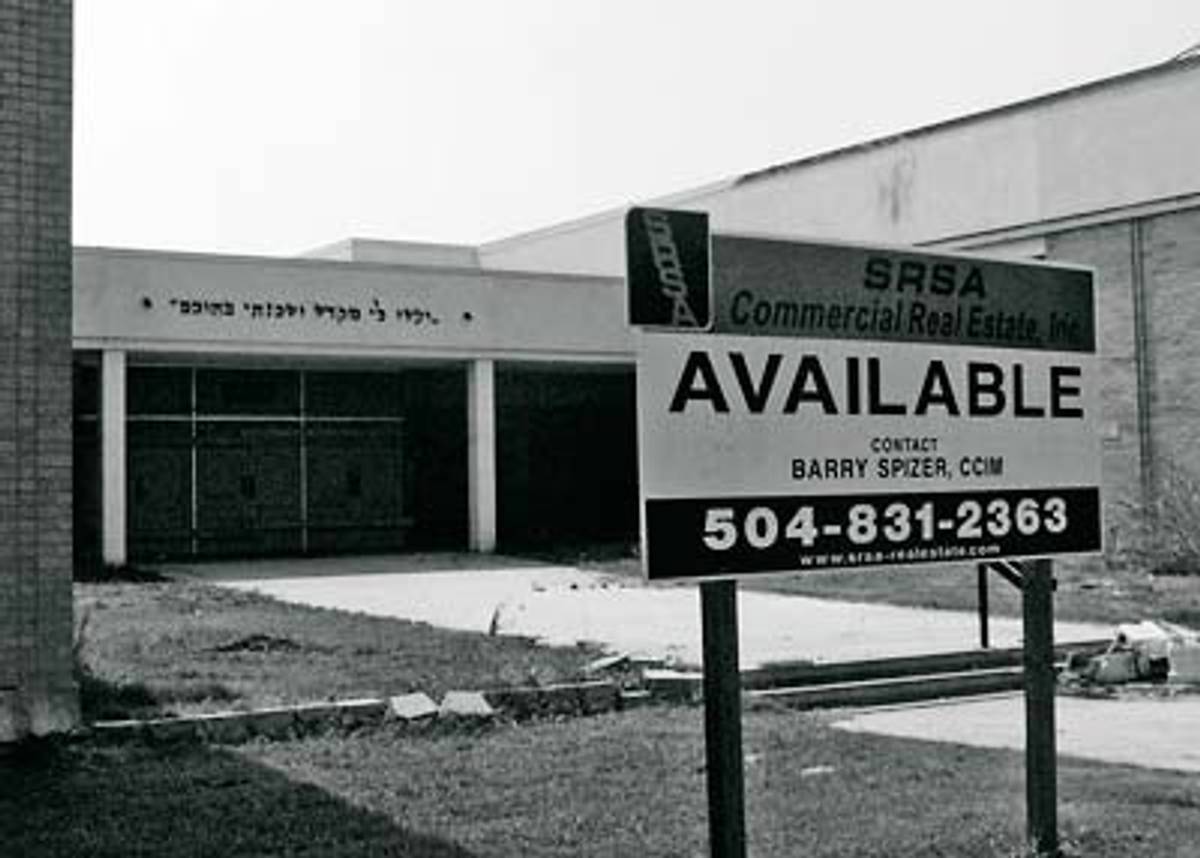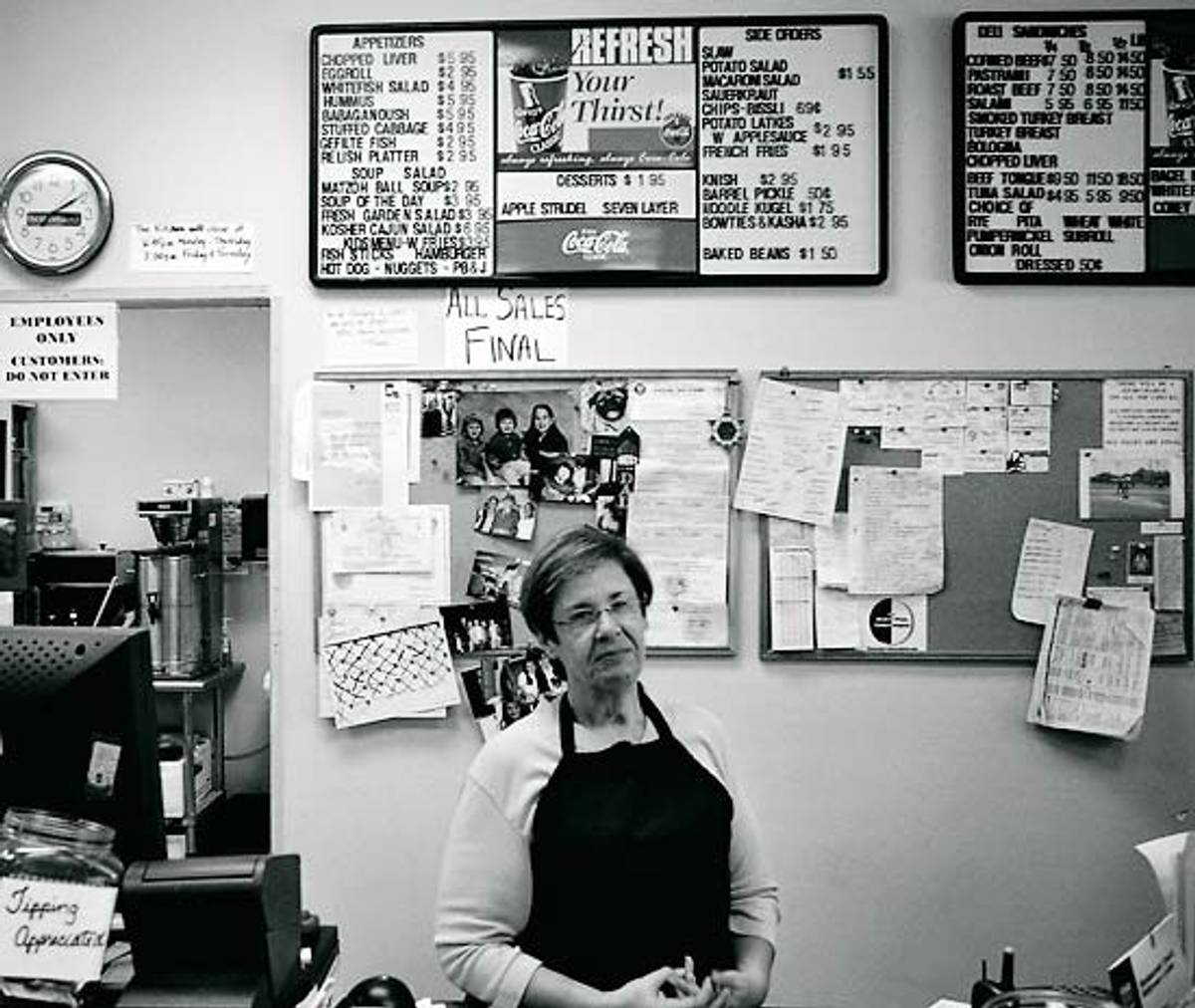You’d hardly believe it now, Janice Arena tells me in her flat New Orleans accent, but after Hurricane Katrina, Kosher Cajun was a wreck.
I had come to the city’s only kosher deli and market for two reasons. The first was to get a sandwich; I’d heard their mock-shrimp po-boy was stellar. This accomplished—it tastes suspiciously like pollock—I began working on my second goal: to get a sense of the Jewish community in New Orleans, three years after Katrina decimated the city. I grew up in the Jewish communities of a handful of southern cities (San Antonio, Dallas, Houston, and Atlanta) and I wanted to understand why so many Jews had decided to come back to this one. Especially after it had been destroyed by a hurricane.
Arena, the head cook, putters around behind the counter while she talks, ministering to the lunchtime crowd. Despite its name, the store is more Jewish New York than Cajun New Orleans—Cajun cooking, with its emphasis on things that live in swamps, is more or less the antithesis of kashrut. Instead, Kosher Cajun is laid out like a traditional New York delicatessen. Kosher meat is arranged in rows behind glass, and neat shelves stacked with Elite and Manischevitz products. The lunch counter serves roast beef sandwiches, knishes, and—as a single concession to the store’s name—the Kosher Shrimp Po-Boy. And the store is thriving, bustling with Jews from across the observance spectrum: men both bearded and clean-shaven, women in wigs and with their hair uncovered, children in felt yarmulkes.

Before Katrina touched down here three years ago today, New Orleans’ Jewish community numbered about 9,500, remnants of a community that had been slowly declining over the last quarter century. Now, about 7,500 call the city home. Of these, the Jewish Federation of Greater New Orleans estimates that 850, or roughly eleven percent, are newcomers.
When the call came to evacuate, just about everyone who could leave, did. Many Jews fled to Houston, Dallas, Memphis, Atlanta—large southern communities that, in the words of Kosher Cajun’s owner, Joel Brown, “could offer far more than New Orleans ever did.” Unlike many non-Jewish refugees, Jews tended to have places to go where they would be welcomed, and where they could start over.
Yet given a choice between resettling in a larger community or going back to a ruined city, most Jews came back to New Orleans. They were far more likely to return than non-Jews—after Katrina, the general population in New Orleans dropped by more than fifty percent; the Jewish population by only thirty.
And people are still coming. True, the Federation is offering grants to newcomers in an attempt to coax young, mobile Jews from other parts of the country. But just over 100 of the 850 newcomers have accepted grants.

This is a hard thing to understand, driving into the city. At first glance, New Orleans fails to impress. The moment you step from your car, the damp swamp air covers you in a grimy blanket. In the outer neighborhoods, along the muddy bayous seeping down toward the gulf, the empty lots gape among the rows of houses like missing teeth. The stench that rises from the bayous wafts over the city like a vague, unpleasant cologne.
Before the storm, Joel Brown evacuated to Memphis with his wife and children. Having grown up in New Orleans’ small community, he liked the greater possibilities Memphis offered. The Jewish community there had everything he could have hoped for—schools, markets, plenty of synagogues. He talks fondly, and at great length, about how great Memphis was for his family. But ten days after the storm, he left his family in Tennessee and drove down to New Orleans to start cleaning out the store.
Despite his affection for Memphis, Brown didn’t see staying away from New Orleans as an option. The very things he liked about the larger community helped drive him back to his hometown. As he told me, it’s nice to have a congregation of hundreds, “but it’s nothing like the feeling of being one of ten in a minyan.”
The more people I talk to, the more I hear that sentiment repeated. Native New Orleanians, both Jewish and not, took it as inevitable that they would return—New Orleans was home. They always say it like that, almost as though it’s italicized. As though it’s the only place they could ever call that. The relatively small Jewish community seems to experience this with particular intensity.
Last year, the Federation completed a study in conjunction with Louisiana State University, comparing Jews who had returned with those who hadn’t. Returnees, they found, were less likely to be depressed or alcoholic than those who stayed away. They were far more likely to be hopeful and optimistic about the future. In the report’s own dry terminology, they were far more likely “to sleep at night.”
“Nothing against Memphis,” Brown says, “but here we can make a difference.”
* * *
Kosher Cajun stands in Metairie, the neighborhood west of downtown where most of New Orleans’ Jews live. Lake Pontchartrain lies to the north, held back by a system of levees. When Katrina hit, Metairie was lucky. Unlike East New Orleans, or Lakeview, where the Orthodox community used to be, the levees didn’t fail.
When Brown came to check out Kosher Cajun, he was at first relieved to see that the damage was not as bad as he had feared: at least the store was still standing. He opened the front door, planning to run across to open the back entrance. “I literally threw up running door to door,” he says. “The smell was so bad—all the rotting meat and chicken. And everything was just kind of bulging from the gas inside.”
The flood that poured over the levee tops left four inches of water in the store. It had sat stewing and festering in the damp bayou heat as the floodwaters ebbed out, leaving behind dozens of pounds of kosher meat rotting in display cases and refrigerators. Black mold grew in the walls.
Clearly, Brown realized, everything would have to be redone.
And soon. A member of Metairie’s small Chabad community, Brown understood that life on the observant Jewish periphery is precarious. As the small observant communities of the South demonstrate, most of the aspects of community that we think of as essential—an eruv, a regular minyan, even a rabbi—really aren’t necessary. These things can be worked around. If there is no synagogue, a congregation can meet in a house. If there is no eruv, they can plan around carrying on Shabbat. If there’s no rabbi, they can simply do without.
But there’s really no way to work around kashrut—either you have kosher food, or you don’t. Without a source of kosher food, there was no way for the Orthodox community in New Orleans to re-establish itself. “People from the community were calling all the time,” Brown says, “trying to figure out if we were going to reopen so they knew if they could move back.”

Kosher Cajun had been the only kosher market for New Orleans’ small Orthodox community of about forty families. The storm gutted Beth Israel, the main Orthodox synagogue. The floodwaters had irretrievably damaged the congregation’s Torah scrolls. But as long as there was food for its members to eat, the congregation could rebound.
Brown had to get the store running again.
* * *
Janice Arena has the wide shoulders and determined look of someone who has been working with her hands all her life. A religious Catholic, she had worked as Kosher Cajun’s head cook for five years before the storm, long enough to have picked up on the importance of a kosher market. She has a fierce loyalty to Brown, and to the store.
Arena waited out the storm in Kenner, a suburb of Dallas, and she came back to New Orleans as soon as FEMA allowed her. She returned to a ruined house in a ruined city. Her squat government-issue trailer sat in the yard outside her flooded house, and the formaldehyde that had been used to keep the house from rotting was slowly poisoning her. After a few days, she couldn’t take it anymore. She left to check on the store.
“My house couldn’t be saved. There were no other jobs. I had no family here anymore. It was clean up here or sit in my trailer and stare at the wall,” she explains. She holds up her arm, which is spider-webbed with red rashes, a lingering reaction to the formaldehyde. “No thanks.”
It took days to even begin moving the trash out of the store. Brown was lucky enough to hire to a friend who owned a construction company before he was swamped with contracts. Using oxygen masks to protect themselves from the stench and the mold, his workers cleared out the trash. They cut out the walls and replaced them, rebuilding the store from the inside out. Meanwhile Arena and her daughter would come in at eight in the morning and clean until it was dark.
Gradually, the store began to look functional again. It reopened in November, three months after Katrina.
“When we finally reopened,” Arena says, “one old woman come in. She said, ‘Thank God you’re open. I’ve been so sick of tuna fish . . .’”
She wasn’t the only one. Almost as soon as it opened, Kosher Cajun was supplying people as far down the Gulf Coast as Pensacola, Florida. Ever since Katrina, Jewish community organizations from around the country have sent hundreds of volunteer delegations to work at rebuilding. The Federation estimates that about half of these kept kosher, and most of them were supplied by Kosher Cajun.
The market also serves a fair amount of non-Jews—Brown says that only about forty percent of Kosher Cajun’s business is Jewish. The rest are mostly halal observant Muslims and people looking for New York-style deli food. “We couldn’t survive any other way,” he says. “There isn’t the critical mass of observant Jews here to support us.”
I tell him that when I was growing up in Dallas, the only kosher restaurant for a while was a vegetarian Indian place—their clientele was Indian, and since it was vegetarian, hashgacha was a snap.
He laughs. “Yeah, it’s kind of like that.”
Or as Diane Guevara, standing behind the cash register, says, “This is, after all, the only place in New Orleans to get a knish.” Though Guevara doesn’t keep kosher herself, she began to understand the importance of having kosher food around after her daughter, Holly, became observant and moved away to the Northeast. “Holly and her fiancé would come down to New Orleans,” Guevara explains, “and I knew that if they were going to stay at our house, I was going to have to find kosher meat. So I came here. And you know how boys eat—pretty soon I was coming in and buying out the whole store.”
When Guevara walked in after the storm to survey the damage, Arena and her daughter were on their hands and knees scrubbing the floors. “They needed help, so I helped,” Guevara says. Now she’s a cashier at the market.
Perhaps those six words—“They needed help, so I helped”—are the motto of all the Jews who came (or came back) to New Orleans. Driving into the city for the first time, my car rattling on the potholes, I remembered the Federation grants and thought, “Man, you couldn’t pay me enough to live here.” But three years after the storm, there is a strange zeal to the city, an almost-messianic desire to rebuild, refresh, remake New Orleans. You can feel it in the way people talk about the storm—as a catastrophe, true, but also as New Orleans’ best chance for a new future.
As Brown put it, “We’re like pioneers here.”
